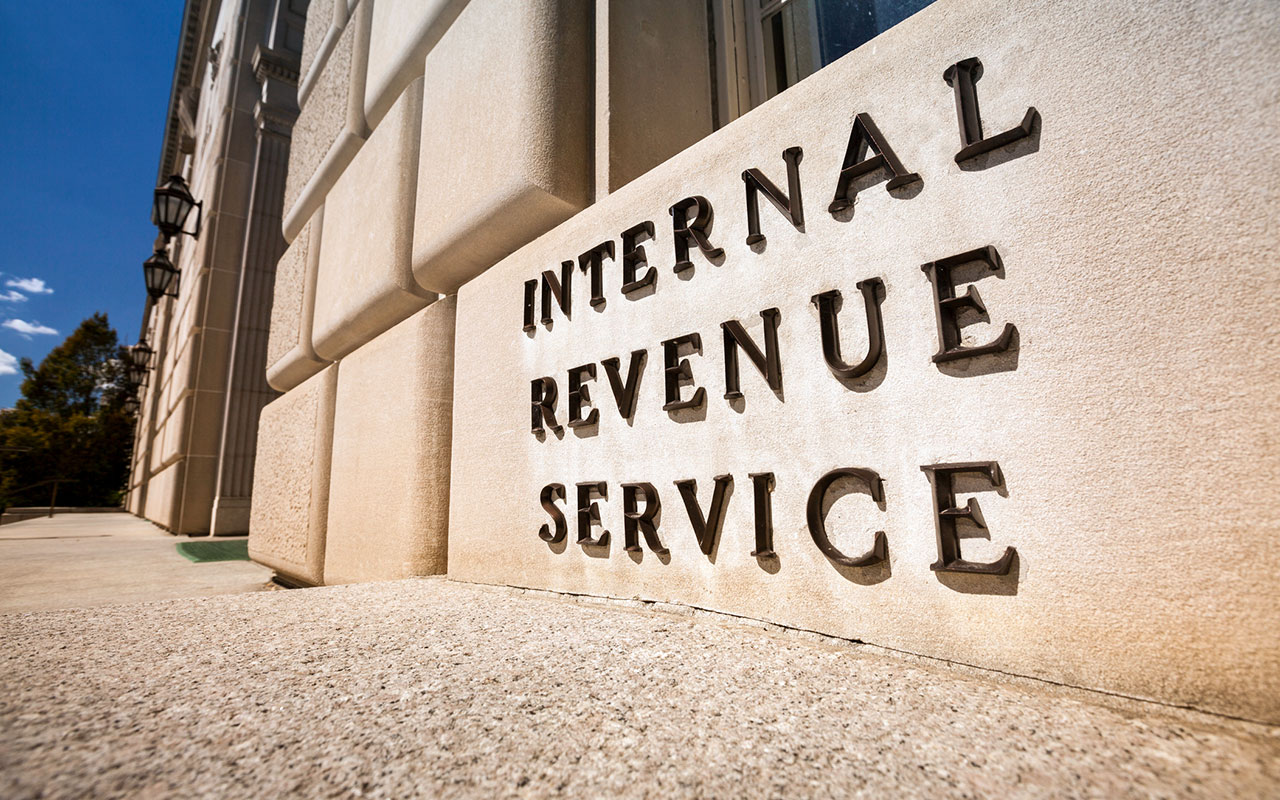IRS Updates Capital Gains Tax Thresholds for 2025
For the 2025 tax year, the IRS has increased the capital gains tax income thresholds. Here's what you need to know.


The IRS recently unveiled the new income tax thresholds for capital gains in 2025, reflecting adjustments for inflation.
These changes (which will apply to tax returns you'll normally file in 2026) could have significant implications for taxpayers, particularly those with investment income.
So, let's break down the new numbers and compare them to the 2024 thresholds.

Sign up for Kiplinger’s Free E-Newsletters
Profit and prosper with the best of expert advice on investing, taxes, retirement, personal finance and more - straight to your e-mail.
Profit and prosper with the best of expert advice - straight to your e-mail.
New 2025 capital gains tax thresholds
For 2025 (returns normally filed in early 2026), the long-term capital gains tax rates remain at 0%, 15%, and 20%, but the income thresholds have shifted.
Remember that short-term capital gains (assets held for one year or less) are taxed at ordinary income tax rates, different from those for long-term capital gains.
For more information on capital gains rates, see Capital Gains Tax Rates for 2024 and 2025.
The new brackets are as follows:
0% Rate:
Single filers: Up to $48,350
Married filing jointly: Up to $96,700
Head of household: Up to $64,750
15% Rate:
Single filers: $48,351 to $533,400
Married filing jointly: $96,701 to $600,050
Head of household: $64,751 to $566,700
20% Rate:
Single filers: Over $533,400
Married filing jointly: Over $600,050
Head of household: Over $566,700
Comparison to 2024 thresholds
Compared to 2024, these numbers reflect about a 2.8% increase across all brackets and filing statuses. It's worth noting that while the percentage increases might not seem significant, they can translate into notable dollar amounts.
For instance, the near 2.8% increase in the 20% rate threshold for married couples filing jointly represents an additional $16,300 of income that can be taxed at the lower 15% rate in 2025 compared to 2024. (2024 threshold: $583,750/2025 threshold: $600,050)
These adjustments also offer a slight advantage for some at the lower end of the bracket thresholds.
For example, married couples filing jointly can now realize up to $2,650 more in capital gains at the 0% rate in 2025 compared to 2024. (2024 threshold: $94,050/2025 threshold: $96,700)
Leveraging the 0% capital gains rate
The new 0% capital gains rate threshold for 2025 creates some opportunities for some investors.
- For example, If your income varies yearly, you might consider realizing long-term capital gains in years when your total taxable income is below the 0% threshold.
- That way, you could take advantage of the lower tax rate.
- Also, depending on your situation, offsetting your capital gains with any losses you may have incurred (tax loss harvesting) could help.
Whatever you do, evaluate all your projected income sources each year, not just capital gains.
Long-term capital gains tax: Bottom line
As Kiplinger has reported, these capital gains tax income threshold adjustments come alongside annual inflation-adjusted changes to the 2025 federal income tax brackets, the standard deduction for 2025, and several other key tax provisions.
The various shifts offer some advantages, like having more income taxed at lower rates, providing some buffer against inflation, and allowing for additional tax planning opportunities in some cases.
But don’t forget state taxes on capital gains, which can impact overall tax liability.
And as always, consult a qualified and trusted tax professional to help manage your capital gains tax liability.
Related
- New 2025 Federal Income Tax Brackets Are Set
- Capital Gains Tax Rates for 2024 and 2025
- New Standard Deduction Change for Those Over 65
- States With Low and No Capital Gains Tax
Get Kiplinger Today newsletter — free
Profit and prosper with the best of Kiplinger's advice on investing, taxes, retirement, personal finance and much more. Delivered daily. Enter your email in the box and click Sign Me Up.

As the senior tax editor at Kiplinger.com, Kelley R. Taylor simplifies federal and state tax information, news, and developments to help empower readers. Kelley has over two decades of experience advising on and covering education, law, finance, and tax as a corporate attorney and business journalist.
-
 The AI Doctor Coming to Read Your Test Results
The AI Doctor Coming to Read Your Test ResultsThe Kiplinger Letter There’s big opportunity for AI tools that analyze CAT scans, MRIs and other medical images. But there are also big challenges that human clinicians and tech companies will have to overcome.
By John Miley Published
-
 The Best Places for LGBTQ People to Retire Abroad
The Best Places for LGBTQ People to Retire AbroadLGBTQ people can safely retire abroad, but they must know a country’s laws and level of support — going beyond the usual retirement considerations.
By Drew Limsky Published
-
 A Confident Retirement Starts With These Four Strategies
A Confident Retirement Starts With These Four StrategiesWork your way around income gaps, tax gaffes and Social Security insecurity with some thoughtful planning and analysis.
By Nick Bare, CFP® Published
-
 Ask the Editor: Taxes, April 11, 2025
Ask the Editor: Taxes, April 11, 2025Ask the Editor In our Ask the Editor series, Joy Taylor, The Kiplinger Tax Letter Editor, answers questions related to IRAs and other retirement accounts.
By Joy Taylor Published
-
 Could You Retire at 59½? Five Considerations
Could You Retire at 59½? Five ConsiderationsWhile some people think they should wait until they're 65 or older to retire, retiring at 59½ could be one of the best decisions for your quality of life.
By Joe F. Schmitz Jr., CFP®, ChFC® Published
-
 Free IRS Tax Filing for 30 Million People: Will It Continue Under Trump?
Free IRS Tax Filing for 30 Million People: Will It Continue Under Trump?Tax Filing Direct File was piloted last year in 12 states and has since expanded to 25. But some wonder whether the program will last under the Trump administration.
By Gabriella Cruz-Martínez Last updated
-
 Widow's Penalty: Three Ways to Protect Your Finances
Widow's Penalty: Three Ways to Protect Your FinancesHigher Medicare premiums, smaller Social Security payments, bigger tax bills … Financial changes can hit hard when a spouse dies. How to counter the blow.
By Ashley Terrell, IAR Published
-
 Reduce Your Retirement Tax Risk With the Three-Bucket Strategy
Reduce Your Retirement Tax Risk With the Three-Bucket StrategySplitting retirement funds into three buckets with distinct tax treatments can help you avoid a nasty tax bill down the line. Here's how the strategy works.
By Bryan S. Slovon, Investment Adviser Published
-
 Financial Fact vs Fiction: This Roth Conversion Myth Could Cost You
Financial Fact vs Fiction: This Roth Conversion Myth Could Cost YouWhile some 'golden rules' stay in style forever, the financial landscape is constantly evolving. Here are five common myths to revisit (with more on the way).
By Scott McClatchey, CFP® Published
-
 Striking Oil in Opportunity Zones: Now Might Be the Best Time to Invest
Striking Oil in Opportunity Zones: Now Might Be the Best Time to InvestYou could unlock hidden wealth in QOZs with strategic oil and gas investments, potentially combining tax advantages with long-term growth in an essential industry.
By Daniel Goodwin Published